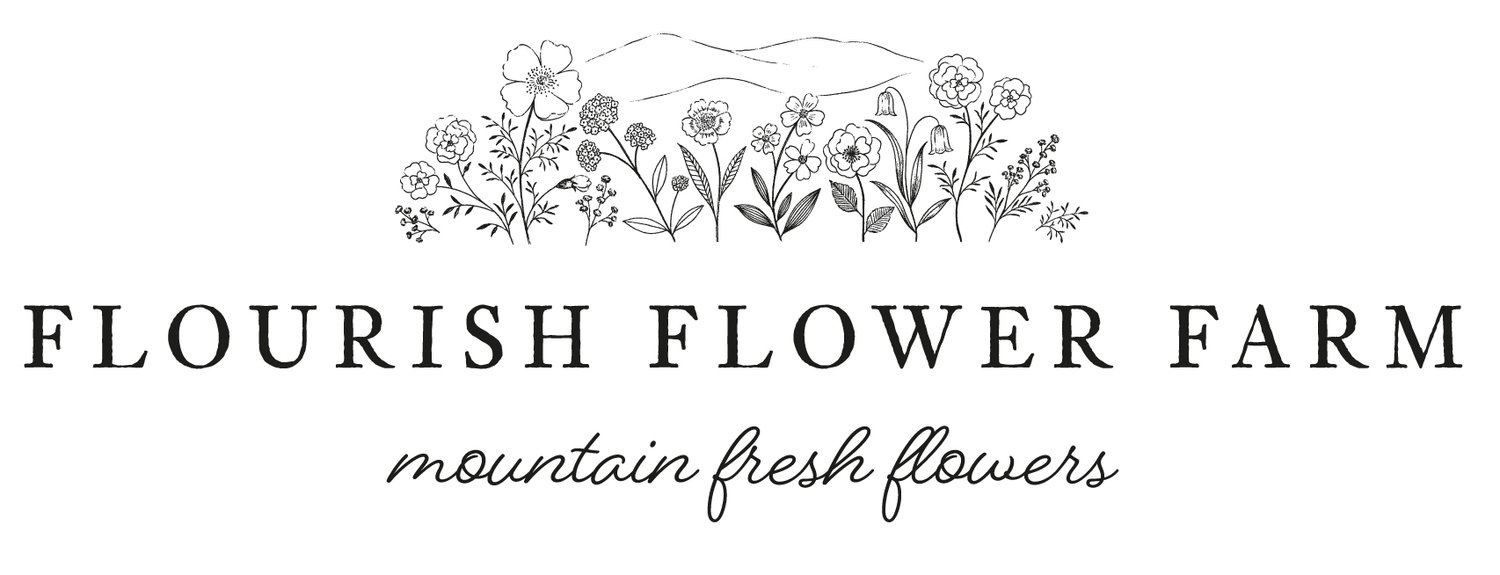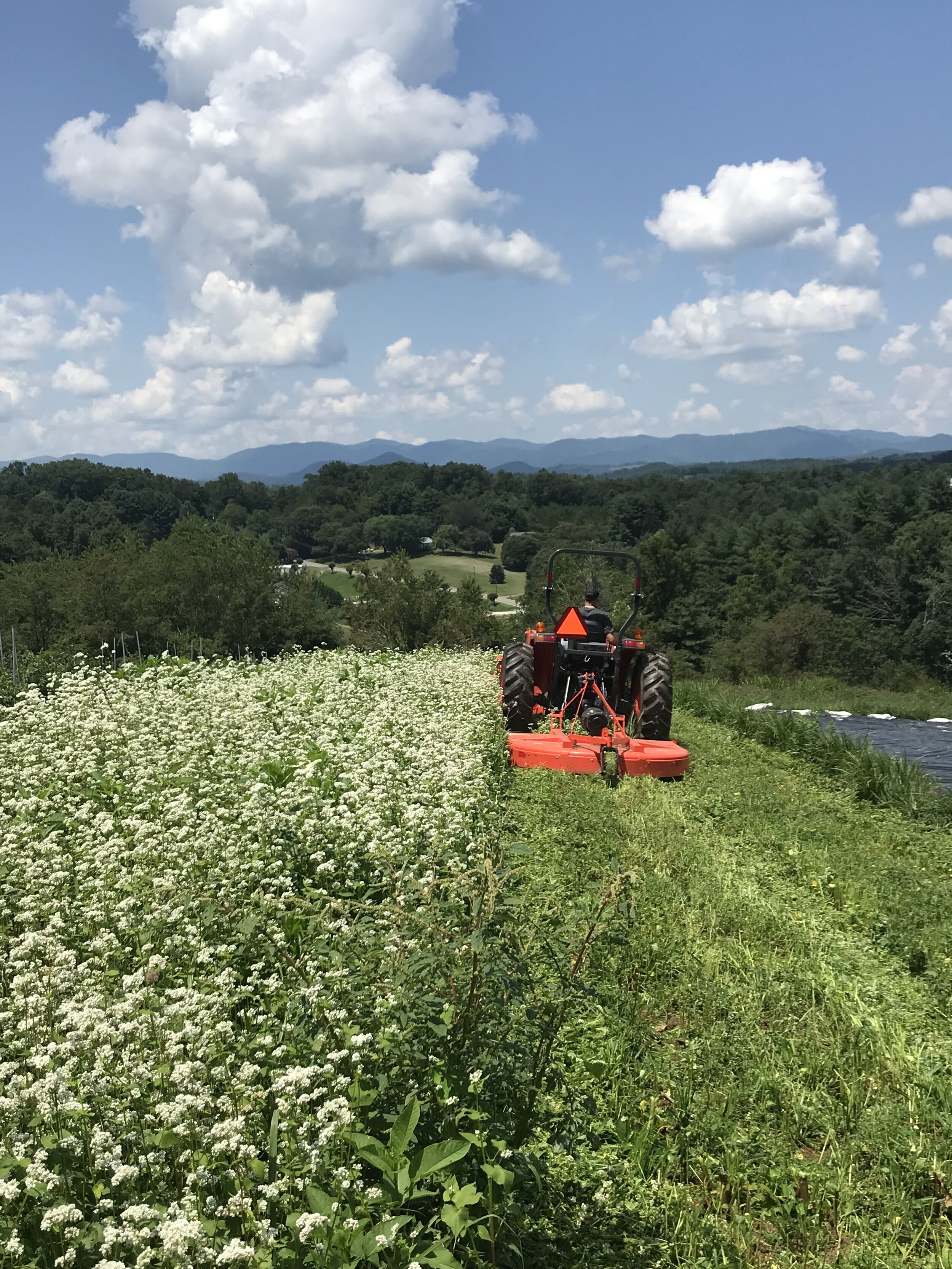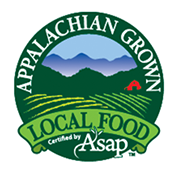Cover Crops for Flower Farming
/I love growing cover crops and they are a very important aspect of our farming operation, one that keeps our soil healthy and our growing practices sustainable. I’m going to be completely honest though… I do not know the in-depth science behind it and (please don’t judge me here), I actually don’t care to geek out on the science. I am grateful for people whose brains soak up that science-y knowledge and freely share it with the rest of us. However my brain is pretty full of other random stuff and most science details do not seem to stick. The logistics of cover cropping is right up my alley though and I’m happy to share what works well on our farm.
Why should you cover crop?
Even science-deficient farmers like me need to know the basic WHY, so here are the over-simplified basics (as I understand them) of why it is important to cover crop:
There are millions and billions of tiny organisms and good bacteria living in the soil and its our job as farmers to keep those guys happy, so they in turn keep our flower crops healthy and happy. Those good little guys need to eat and cover crop material provides them with the nutrients, minerals, etc. to stay happy and alive. Happy organisms = happy crops.
Increasing organic matter in the soil is a never ending project. All crops take nutrients out of the soil throughout their growth cycle and those nutrients need to be replenished for the next season. Its like eating a hearty meal before a big hike. This is basically the same theory as reason #1, but with a different spin. Some crops “feed” more heavily on minerals and nutrients and different cover crops add those back into the soil making it more fertile (for example, peas/legumes are great for adding in nitrogen). Our soil tends to be heavy with clay here in Western North Carolina and organic matter helps to lighten things up.
Erosion control! We farm on a large slope at Flourish and losing precious top soil is always a concern. Loose dirt is more likely to wash away during a heavy rain event and having plants with roots growing (aka cover crops or actual crops) helps to keep the soil in place. One of my goals is to never have an empty field or bed on the farm for more than a month. Side note, this is another reason why we use landscape fabric in our pathways, besides for weed control.
Weed control: Rather than leaving a field bare for part of the season and thus giving the weeds free rein to grow abundantly, cover crops sown at the right time can outcompete the weeds. I would much rather have a field full of buckwheat than weeds!
Habitat for beneficial insects and bees!
Hopefully that gave you a few good reasons of why cover cropping is important. Bottom line: cover crops are grown for the benefit of the soil, not for the actual crop. If you are interested in the real science, and not just my overly simplistic theories, here is a great resource.
Preparing a field to plant cover crop
The two mains seasons that I plant cover crops are early summer and late fall: after our cold hardy annuals are done blooming and late October after the frost takes out our summer annuals. Its time to flip those beds after the crops are done blooming. More details on the timing of planting below.
After pulling out the spent plants (we pull them out by hand), rolling up the landscape fabric and drip irrigation, we make one pass with our disc harrow using the tractor. This loosens up the soil and makes a nice home for the seed without disturbing it too much. Then the field is ready to spread cover crop seed. I look at the weather forecast and aim to sow seed right before rain is expected. I spread the seed by hand while carrying a 5 gallon bucket. There are certainly fancier, less labor intensive methods of spreading cover crop seed, but this works for us. We farm on a slope and it would be too difficult to use a push-type broadcast spreader on the uphill and we don’t have a fancy broadcaster for behind the tractor (plus we try to minimize the amount we drive the tractor in the fields to lessen compaction), so the old-fashioned way gets it done.
Spring + Fall Cover Cropping
Here is a very simple breakdown of when and what we plant:
June = Buckwheat
After cold hardy spring flowers (like snapdragons, feverfew, dianthus, ranunculus etc.) are done blooming, we prepare the beds using the method described above. Buckwheat is great forage for the bees over the summer and it grows quickly, giving us ample time to have those beds ready for fall-planting. We typically mow down the buckwheat in August and then let it die back for about 1-2 weeks - this timing all depends on weather and how busy we are with other farm tasks. We use our disc harrow to incorporate the buckwheat into the soil and then make the beds smooth with the tiller. Then we lay drip lines and landscape fabric and the beds are ready for planting. Usually this area ends up being planted with cold hardy annuals once again. While there are certainly many other summer cover crops that can be grown, buckwheat is quick and easy and has become my go-to. I always make sure to leave a few fall-prepared beds empty and ready to go so that I am not too stressed for available planting space in the early spring. Unfortunately these beds will not have a cover crop over the winter, but nothing is 100% perfect in farming.
Early November = Austrian Winter Peas and Winter Rye
After the summer annuals have been killed by a hard frost, we prepare the beds using the method described above. Winter peas and rye are a great mix for easy winter cover cropping, though I switch up my mixture a little each year and also use oats, winter wheat, clover and vetch. These crops will grow slowly throughout the winter and then will start to take off during those warm spring days. We usually mow this cover crop in early April so that we can prepare them for planting tender summer annuals.
Please know that this timing works perfectly for us because our usual last frost date is around Mother’s Day and our first frost is mid to late October. Cover crop timing will likely be different for other growing zones.
Hopefully our system of cover cropping provides you with some ideas on how to incorporate cover crops into your own farming operation. I would love to hear from others about their cover cropping systems, particularly in other hardiness zones, so please share in the comments!
xo Niki













